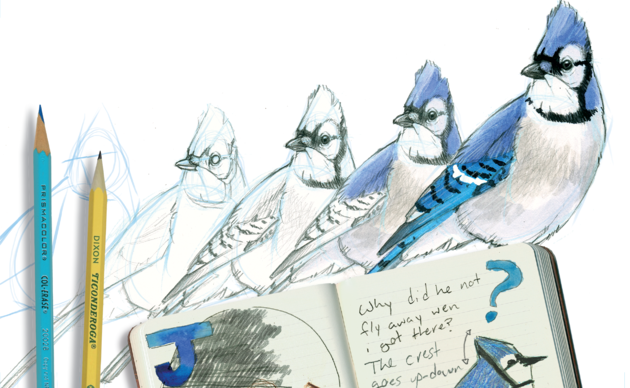The Ash-throated Flycatcher is a common visitor to bird boxes. In addition to bird boxes it will use pipes, fence posts, even car covers! It's adaptability have made the Flycatcher successful even as its natural habitat disappears.
Site Selection
Place your box in an open woodland woodland near sagebrush/chaparral/mesquite, pine, cedar, and ideally a water source such as a creek or a pond and in partial sun and shade. Flycatchers compete with non-native Starlings for bird boxes because they are often found in the same habitats. Make sure there is a way to hang the box from a 40" chain or wire. Flycatchers prefer a swinging box and this also discourages Starlings from entering.
Building Specifications
- Wood should be 1" thick to provide insulation
- The floor-space should be 4" x 4"
- The roof should be slanted for water drainage and extend over the entrance hole
- The depth should be 6" - 8"
- The entrance should be 1 1/4" - 1/2"
- The entrance should stand 1" - 6" from the floor
- It should stand 6" - 10" from the ground
What to do when the box becomes occupied
Nesting occurs from March until June. Flycatchers will provide their own matted fur and mud to make their nests. Their nests take about two days to be completed by the female. Within 10 days of the nest's completion the clutch will arrive. Clutches contain 2 - 7 eggs and are incubated for 13 - 15 days after the last egg's arrival. Avoid causing disturbances around the box during incubation. It takes an additional 13 - 15 days for the young to fledge and after that the birds will stay in the nest for several more days until the babies can provide their own food.
How you can help, right now
Get Audubon CA in Your Inbox
Our newsletter is fun way to get our latest stories and important conservation updates from across the state.
Donate to Audubon
Help secure the future for birds at risk from climate change, habitat loss and other threats. Your support will power our science, education, advocacy and on-the-ground conservation efforts.
HOTSPOT: Flyover of California's Birds and Biodiversity
California is a global biodiversity hotspots, with one of the greatest concentrations of living species on Earth.




